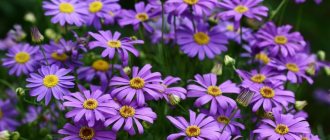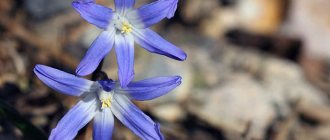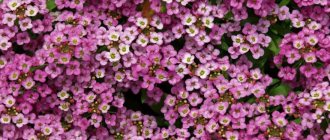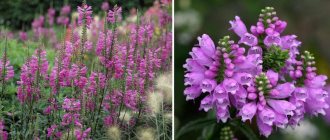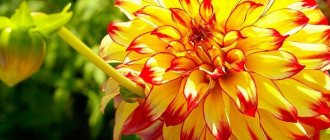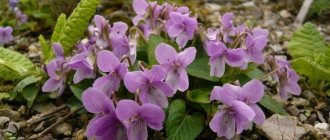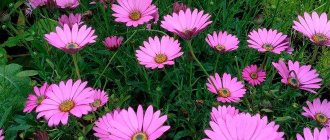Description of the plant
Helichrysum is a genus of plants in the Asteraceae family. Its other names are tsmin, immortelle, golden flower. The genus includes about 500 species, these are perennials and annual plants, herbaceous and subshrubs. All species are thermophilic and grow in the Mediterranean, New Zealand, and Central Asia. In our country, wild-growing sandy helichrysum (Helichrysum arenarium) is found. Relatively recently, its unique properties were studied, and the species was recognized as a herbaceous plant.
The name "Xerochrysum" is a combination of two Greek words:
- "xerós" means dry;
- "chrisós" means golden.
Botanical characteristics of species may vary. However, there are common features. Helichrysum leaves are alternate, the edge of the leaf is entire. Helichrysum flowers consist of a medium-sized basket (5-20 mm in diameter) and bright involucre leaves arranged in several rows. There are many baskets (10-100), they are collected in inflorescences. The fruits are four- to five-sided, with elongated achenes.
Requirements for planting site and soil
Helichrysum should be grown in sunny, warm, wind-protected places. Immortelle also grows well in partially shaded areas.
Helichrysum sandy is frost-resistant, but it is recommended to cover it. Bract cumin is grown as an annual plant. Italian and petiolate immortelle will not survive frosty winters, so it is better to grow them in containers; before frost sets in, it is recommended to move the pots to a cool, bright room.
The soil for helichrysum is preferable:
- fertile;
- well drained;
- neutral or acidic.
Immortelle is sensitive to iron deficiency, and on calcareous soils the supply of iron to the plant is blocked. With iron deficiency, plants suffer from chlorosis - the leaves turn yellow, the veins remain green.
Contraindications
Despite all the advantages and beneficial properties, immortelle has a number of contraindications. You must follow certain rules, adhere to the exact dosage, use all the ingredients included in the decoction or infusion based on dried annual flowers.
It is not recommended to use immortelle during pregnancy and breastfeeding. It is also contraindicated for children under seven years of age. Immortelle should be used with caution in case of individual intolerance.
We bring to your attention the most popular recipes with immortelle.
Landing
Helichrysum seeds are recommended to be sown in April for seedlings at home or in greenhouses. Helichrysum can be planted in open ground when the residual spring frosts have passed, depending on the region - in the middle and end of May.
When planting in the ground, you need to prepare the area, dig it up, add compost, and remove weeds. The soil must be permeable; if necessary, river sand can be added to it. After planting, it is important to provide favorable conditions for the plant to take root, water and remove weeds.
Helichrysum bract seedlings are planted in the ground at a distance of 20 × 30 cm.
In pots they can be planted in universal flower soil, but the containers must have drainage and preferably a good layer of drainage.
Growing and care
Helichrysum is not difficult to grow; the main care measures are as follows:
- Pinching . It is worth pinching the main shoot while it is small. Then the plant will produce many side shoots, and flowers will appear at the top of the stems. This is especially true for immortelle bracts.
- Supports . Tall varieties sometimes require support.
- Weed control . Weed infestations should be controlled throughout the growing season by manual removal.
- Watering. Helichrysum is drought-resistant; watering is carried out only during long periods without precipitation. Excess moisture can cause fungal diseases. The rule does not apply to growing in containers - here watering must be regular. If there is a lack of water, helichrysum will quickly wither.
- feeding should be moderate. It is worth using organic fertilizers.
- Trimming. If the shoots of immortelle are too long, they can be cut off. Helichrysums will bloom, and cut shoots will look beautiful in a vase as an addition to the bouquet. They can also be used for propagation by taking cuttings.
- Diseases, pests . If the area is poorly ventilated, located in the shade, or it has been raining for a long time, the plants may be affected by powdery mildew.
- Immortelle does not like rain and cold; if such weather prevails in the summer, the plants may lose their beautiful appearance. If possible, it is better to place the pot under a canopy.
- Wintering . Helichrysum petiolate is a perennial plant, but not frost-resistant and in our conditions it is grown as an annual plant. However, plants can overwinter. In the fall, we move them to a bright, preferably not too warm room (with a temperature of 16-18 °C). Water so that the soil does not dry out. Unfortunately, such overwintering helichrysums do not always look good in the spring. However, you can trim their shoots and make cuttings from them. You can also make seedlings in the summer and keep young plants over the winter in a cool room - they will take up less space and have greater viability in the spring.
Medicinal properties
Among the beneficial properties of dried annual flowers:
- hair strengthening;
- improvement of the general condition of the skin;
- cleansing the body of toxins.
It is worth noting that in folk medicine this plant is used as a remedy for insomnia and a sedative. It also helps with heartburn. It is recommended to use it to treat hypertension, gonorrhea, colds, and cholecystitis. In ancient times, the medicinal properties of immortelle herb were known, allowing it to be used against bites of rabid animals.
By the way, immortelle has absolutely no side effects. Due to this, it is included in gastric and choleretic preparations. The only drawback of dried flowers is its taste. Decoctions with it are very bitter.
Reproduction
Helichrysum petiolate, Italian and sandy can be propagated by apical cuttings, which are cut in the summer and rooted in a moist substrate or water. Helichrysum bracts reproduce generatively - by sowing seeds.
How to cut immortelle cuttings?
To prepare cuttings of petiole helichrysum, it is enough to cut a shoot (10 cm long), tear off the lower leaves and put it in water (preferably in a transparent glass container). After about 2 weeks, the cuttings will take root (it happens that even twigs that stand in vases for decoration give roots). We plant the rooted shoot in well-drained soil. When it starts to grow, it is recommended to trim the top so that the plant will send out side shoots.
Italian helichrysum cuttings take root best from February 1 to March 15. If cuttings are cut in winter, they are rooted at home. Roots appear in about 3 weeks. The rest of the time, Italian immortelle does not take root well.
Cuttings take root best at the end of winter on a windowsill.
Growing seedlings from seeds
Traditionally, you can sow helichrysum seeds directly into open ground in the second half of May. If you need to speed up flowering, helichrysum seeds are sown as seedlings and grown at home. Sow seeds 6-8 weeks indoors before the last spring frost. This way the flowering period can be brought forward by 3 weeks. Seeds sown indoors should not be covered with soil; simply pressing them to the ground is enough, because light helps germination. The soil is not watered with a watering can, but sprayed with a spray bottle.
Italian immortelle germinates in about 14 days. Boxes with seedlings must be kept in heated rooms, at a temperature not lower than 18-20 degrees Celsius.
Helichrysum seedlings are planted in open ground after the last frost has passed - in the second half of May, after hardening.
Photo. Helichrysum bract seedlings
Harvesting grass
Flowers should be cut at the moment when only the central balls have blossomed, and the side ones are still in their infancy. Otherwise, the raw materials will not be procured; the central flowers will fall off, scattering into small pieces. The flowering period of one shield is 10-15 days. On one plant you can carry out 3-4 collections with an interval of 1 week. The shields need to be cut off with a part of the shoot 1-1.5 cm.
Note! The collection of immortelle flowers should be carried out within 5-7 days from the beginning of flowering.
When harvesting grass at forest edges, you only need to collect yellow or orange flowers. If you come across white or pink ones, this is a similar plant called cat's paw, which cannot be collected and used as a medicinal plant.
Flowers are dried under a canopy or on a well-ventilated veranda or balcony. The collected material is scattered in one layer on paper, oilcloth, or wooden flooring without access to direct sunlight, since the grass loses its medicinal properties when exposed to sunlight.
Flowers must be dried for storage.
The finished herbal mixture has a bright color and aroma similar to the smell of bitter wormwood. The shelf life of harvested raw materials does not exceed 3 years. You can look up recipes for preparing infusions in specialized literature and online.
Why does interest in medicinal plants in general and immortelle in particular not subside? This herb is recognized by medicine and has long served people; it can help with many ailments, especially prevent the formation of gallstones, which is important for a large part of the population, saves money on expensive drugs, and is gentle and gentle on the body. It is not difficult to grow immortelle on your own plot. It is necessary to create an outflow of excess moisture and fill the planting hole with a large amount of sand. Collect the grass at the right time and be sure to place a bouquet of dried flowers in the room. Immortelle, like the flower of the Sun, will delight you all winter!
0 0 votes
Article rating
Use in the garden
Each of the above mentioned immortelle species is used in the garden. Due to insufficient frost resistance, petiole and Italian immortelle are grown in containers to decorate balconies, terraces, entrance doors, and paths.
bract
These heat-loving, drought-tolerant annuals are prized for their beautiful, brightly colored flowers. Tall varieties of helichrysum bracts are considered secondary plants in the flowerbed. The edges of the flower bed can form petiole, Italian and sandy types. In addition, they are suitable for decorating rock gardens.
Along with species such as rudbeckia, monarda, yarrow or zinnia, immortelle bract is suitable for flower beds. In large containers, you can combine helichrysum flowers with plants with similar requirements.
Low varieties of immortelle can be placed in front of borders, in terrace containers, window boxes, and hanging pots.
This is the main type for dry bouquets and compositions. The inflorescences should be collected while the tubular flowers (“center”) are still completely closed.
Chereshkovy
Petiole immortelle is used in country gardens; it can be used as a ground cover plant. The species can also be planted on rockeries and slopes. Fast-growing varieties (“Silver”) are especially suitable for growing in open areas.
In pots, petiolate helichrysum can be planted along the edges so that the shoots hang beautifully. They go very well with all colors that love the sun:
- pelargoniums,
- petunias,
- surfinium,
- heliotropes,
- marigolds,
- coleus,
- chrysanthemums.
They look beautiful in slightly shaded areas, for example, with lobelia erinus.
Photo. Petiole helichrysum in pots
Italian
Unlike petiolate immortelle, Italian cannot be grown as an ampelous flower because it is a dwarf shrub. The fact that it is an evergreen plant makes it a wonderful addition to our gardens. Young Italian immortelle looks beautiful in carpet beds. In open ground it can be grown in single specimens or in rows. Suitable for forming trimming, e.g. into balls. Immortelle forms a silvery background for other plants.
It can be grown in a pot, like a planter, but it grows up to 70 cm in height, and with regular pruning it becomes very branchy. The exception is when Italian immortelle is grown as an annual plant; as a result, the bushes reach a height of up to 30 cm (in this case, pruning is not recommended). Since this plant comes from sunny Italy, it especially likes sunny places.
Sandy
Sandy helichrysum can be used in naturalistic gardens. However, it is more often grown as a useful herb. This is a real treasure trove of active substances. An infusion prepared from it helps with ailments of the digestive system, supports liver function, and has a choleretic effect.
All types of helichrysum can be used in gardens. You just need to choose a species and variety that suits certain conditions in order to fully enjoy its beauty and exceptional properties.
Chemical composition of immortelle
The beneficial properties and contraindications of immortelle are related to its chemical composition.
Medicinal varieties of the plant are used for medicinal purposes.
The culture contains a number of useful components:
- flavonoids;
- saponins;
- resins;
- arenol;
- essential oil;
- vitamins A, C, K;
- polysaccharides;
- coumarins;
- phthalides;
- tanning;
- potassium, manganese, calcium;
- organic acids.
Immortelle contains biologically active substances, vitamins and minerals - their effects on the body are described in the table.
| Substance | Impact on the body |
| Flavonoids | Antioxidant, prevents premature aging, prevents the formation of cancerous tumors |
| Vitamin A | Provides normal vision, strengthens the immune system, participates in the formation of the fetus |
| WITH | Strengthens the immune system, improves skin health, prevents cancer development |
| TO | Reduces the risk of bleeding. Strengthens bones |
| Saponins | Improves immunity. Helps reduce bad cholesterol |
| Tanning components | Removes toxic compounds, including heavy metals |
| Potassium | Supply the brain with oxygen. Ensures the functioning of the heart. Helps remove toxins |
| Manganese | Reduces bad cholesterol levels. Strengthens the effect of insulin. Actively participates in many metabolic processes |
| Calcium | Strengthens bones and teeth. Inhibits inflammatory processes |
